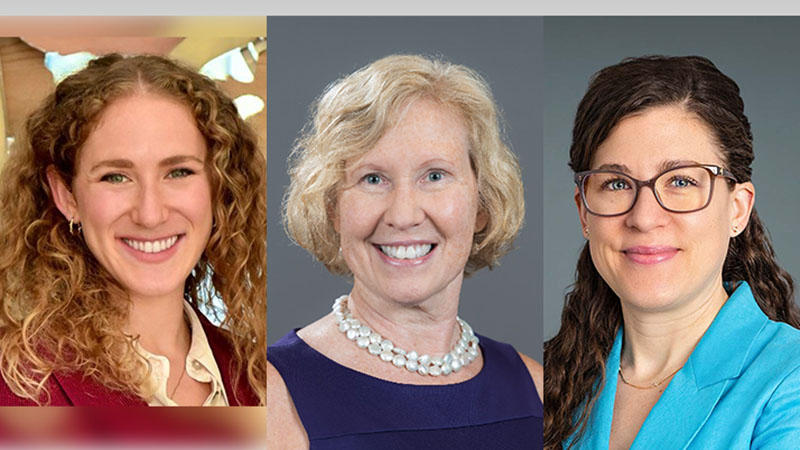
If you are interested in the intersection between aging and innovation, these certainly are intriguing times.
Last Thursday I attended the kickoff event for Aging 2.0’s brand new GENerator program. This is “a new founders program that supports the most promising entrepreneurs working to enhance the lives of older adults and improve long-term care.” (Which I think means this is a business accelerator, but after only a year blogging about digital health innovations, I can’t promise to have mastered all the business lingo.)
Despite the whopping size of the boomer market (see this terrific Bloomberg article on how business has so far struggled to tap it), this seems to be the first accelerator focused on serving the 50+ demographic.
I found myself impressed both by the growth of Aging 2.0 — an organization co-founded by a gerontologist only 18 months ago — and by the offerings of the eleven companies chosen. It’s encouraging to see the power of innovation and technology really focusing on the problems affecting older Americans, and those who serve them.
Of course, I also find myself with some reservations. I think of myself as a public-health geriatrician, and as such, my primary interest in these new innovations is less about whether there’s a good business market, and more about whether or not these offer good, practical solutions to the more important health and social problems affecting aging adults.
There is no question that entrepreneurs are great at innovation. But to succeed they also need to be great at selling their product. Businesses involved in healthcare or other socially-minded arenas always proclaim that they are doing good things for individuals and for society. Which sometimes is true but often it’s not quite as true as the business says it is, or as the business would like it to be. In the end, a startup must satisfy its investors. And an accelerator must satisfy its startups and investors.
So what does this mean for those of us professionals with expertise assessing social value and healthcare value? It means we should get in there and plan to constructively engage with two crucial groups. One group is the the innovators themselves, who will be interested in our expertise and feedback (although once they have a product at market they’ll probably be ambivalent when we raise concerns).
The other group is the public to whom these products are being marketed. We can and should equip ourselves to help the public assess and understand the real health and social value (or at least, likely value) of these innovations that they are being invited to purchase.
This public, needless to say, is quite a large group. It encompasses the 50+ demographic, as well as those offering services to this group, including long-term care and senior housing providers. And the sheer size and diversity of the 50+ age group is really something: the US Census data shows that in 2011, the 50+ population (civilian, non-institutionalized) was 98 million people.
Of those people, many are family caregivers worried about an aging adult. Others are themselves in need of products and services to help cope with chronic illness, cognitive problems, or physical frailties. And of course, a large group of boomers is eager to maintain health and wellbeing for as long as possible.
11 Startups chosen by Aging 2.0
For its inaugural GENerator program, Aging 2.0 chose eleven companies. I heard each give a short talk last week. Here are capsule summaries, based on what I heard, along with a few extra thoughts.
- BrainAid: smartphone or tablet app with patented software meant to help people compensate for executive dysfunction. Originally designed to help people with brain injury or stroke, the company believes its software can help people with early Alzheimer’s or other neurodegenerative cognitive impairment as well. Company has been working with the VA.
- CareLinx: online marketplace allowing families to find, screen, hire, and pay in-home caregivers without going through an agency. (I wrote about CareLinx last year; still think it’s a promising idea although I have no idea how well it’s actually working out for the families and paid caregivers involved.)
- CareSolver: a free online platform that provides customized tools to help family caregivers manage the needs of aging parents or other loved ones. This is right up my alley given my long interest in caregiver education, so I will probably try this soon. Of note, they apparently offer a Beer’s criteria med checker (something I’ve said we need in previous GeriTech posts).
- Life2: predictive analytics company focusing on aging. From the short presentation provided, seems to me they might focus on helping LTC providers identify residents at increased risk, along with offering support in mitigating the risk. Suspect mitigating risk will end up being harder than identifying those at risk.
- Lift Hero: “Medical Trips Made Easy,” says the website. Connects seniors who need rides with off-duty EMTs who provide door-through-door service to appointments. (Having seen elderly patients struggle to get to and from the curb, that “through” could be important.) This could be a very useful service although if the passengers are on average frail enough to benefit from EMT drivers, or have cognitive impairment, I certainly hope clinicians will have a way to connect with the care circle regarding the visit. (Often the person accompanying the older patient is instrumental in providing extra history, or in helping relay instructions to the care circle.)
- Lively: Activity sensors for the home combined with printed LivelyGram that sends the senior pictures and news twice a month. I wrote a bit about Lively and activity sensors last May, and am glad to see that it’s possible to attach an activity sensor attach to a pillbox. (Extremely helpful to clinicians to know if a person is or isn’t taking their medications!)
- MyGrove: This one flummoxed me a bit so I’ll just quote the blurb passed out at the event: “a multimedia marketplace and social engagement platform tailored for Active Adults and their communities.” If you, like me, aren’t sure what an Active Adult is, it’s apparently a term used to refer to people aged 55+. (What to call Active Adults when age and illness render them less active? I don’t know.) Whatever this product is, it sounds like they are targeting the “young old” who aren’t yet close to needing geriatric expertise.
- OpenPlacement: platform designed to help seniors, families, and discharge planners find and choose among rehab or residential placements more easily. I assume this is modeled on OpenTable, although obviously placing seniors is more complicated than making a restaurant reservation. Should be helpful to families and discharge planners facing transitions in care, since right now families often find it’s a nightmare to figure out who accepts their insurance, has beds available, offers certain features, etc.
- Sabi: Per Google, the “pill box and walking cane company.” Per Sabi, a creator of products that improve day-to-day life with “superior functionality and design.” The website reminds me of the dilemma many companies face: how to sell products to older adults without reminding them that they are older? Still, the products really are attractive and look quite functional too.
- Tapestry: App for web and mobile which simplifies social media for older adults. Meant to help families stay connected, by creating an easy interface for seniors to view Facebook photos, email, photos, etc. Currently has a free basic plan or for $5/month offers unlimited messages and photo storage. In general I think this kind of service will ultimately very useful to many older adults. Almost every older person loves to get messages and pictures from family, but navigating a standard tablet can be overwhelming to some, either because they are not tech-savvy or because they are cognitively impaired.
- True Link: A caregiver-managed debit card allowing personalized spending controls and with fraud-protection features. The founder said that every year seniors lose $52 billion to scams and fraud (!); True Link is meant to offer vulnerable seniors a way to spend without putting themselves at excess financial risk. Caregivers can block spending on certain merchants or types of merchants (i.e. sweepstakes.) I could see this being a great option for seniors with cognitive impairment, and wonder if it will be of interest to financial trustees and fiduciaries. For families, the hard part will be bringing up their concerns re finances to an older loved one; proposing this option likely will be dicey.
So there you have it: eleven ideas meant to make life better for older adults and their caregivers. Will they take off? Will people use them? Will people like them? (And how will we know if people like them? Hopefully users will have some way of posting reviews.)
Last but not least, will these improve outcomes in terms of wellbeing, function, avoiding morbidity, and reduction of caregiver stress?
We should find out the answers to at least a few of these questions over the next year or two.
And we should think about giving the innovators, as well as the public, constructive feedback on these products. They surely aren’t perfect, but they are a step in the right direction and most of them are trying to meet real needs of aging Americans.
In the meantime, if you’re a clinician or work on healthcare for older adults, which of these ideas do you find most promising?
[Disclosure: I have no financial ties to any of these companies, or to Aging 2.0.]by: Leslie Kernisan, geriatrician & founder GeriTech blog.



